When we look at the Hisense E7NQ PRO in everyday use, it is immediately apparent that this is a television designed with a broad range of viewers in mind. The picture, although not breathtaking at first glance, gains a lot after proper calibration. The colours appear more natural, and a brightness level of around 500 cd/m² makes it comfortable to watch in a sunlit living room. The wide viewing angles offered by the IPS panel are an additional plus – we no longer have to fight for the best spot on the sofa. Dolby Vision can enhance the overall experience, and in SDR mode, the television delivers a truly pleasant image. Sports and gaming fans will find even more reasons to be satisfied here. High refresh rates (144 Hz) guarantee smooth ball movements on the pitch, while low latency, VRR, ALLM, and compatibility with G-Sync and Dolby Vision in games cater to those who value responsiveness and immersive gaming experiences. Because of all this, the E7NQ PRO becomes an interesting proposition for computer gamers as well. The VIDAA system works quite well – there are plenty of applications, although it lacks music-specific ones like Spotify or Tidal. However, you can expect recording, AirPlay, mirroring, and decent cooperation with wireless devices. Yes, there are certain shortcomings and imperfections – especially regarding subtitle support from USB or perfect management of brightness and contrast, and the absence of HGIG may disappoint the most demanding gamers. When we gather all the impressions and experiences, the E7NQ PRO emerges as a device that will perform well in many situations. It has its advantages – such as wide viewing angles, pleasant images after calibration, numerous additional functions, and excellent motion fluidity in sports or games. At the same time, it is important to remember that this is not a television intended for those seeking perfect experiences for evening viewings in total darkness. In low lighting, the deficiencies in contrast and black levels become more pronounced, so we suggest that individuals who primarily plan evening screenings look for alternatives among competitors. Nevertheless, as a versatile solution for everyday use – from watching television in a bright living room to playing console and computer games – the E7NQ PRO performs really solidly.
- Matching (Score)
- Our verdict
- TV appearance
- Where to buy
- Contrast and black detail
- HDR effect quality
- Factory color reproduction
- Color reproduction after calibration
- Smoothness of tonal transitions
- Image scaling and smoothness of tonal transitions
- Blur and motion smoothness
- Console compatibility and gaming features
- Input lag
- Compatibility with PC
- Viewing angles
- TV efficiency during daytime
- Details about the matrix
- TV features
- Apps
- Playing files from USB
- Sound
Hisense E7NQ PRO vs TCL C7K / QM7K
Direct compare
C7K / Q7C / MQLED85K / C79K / C71K / QM7K

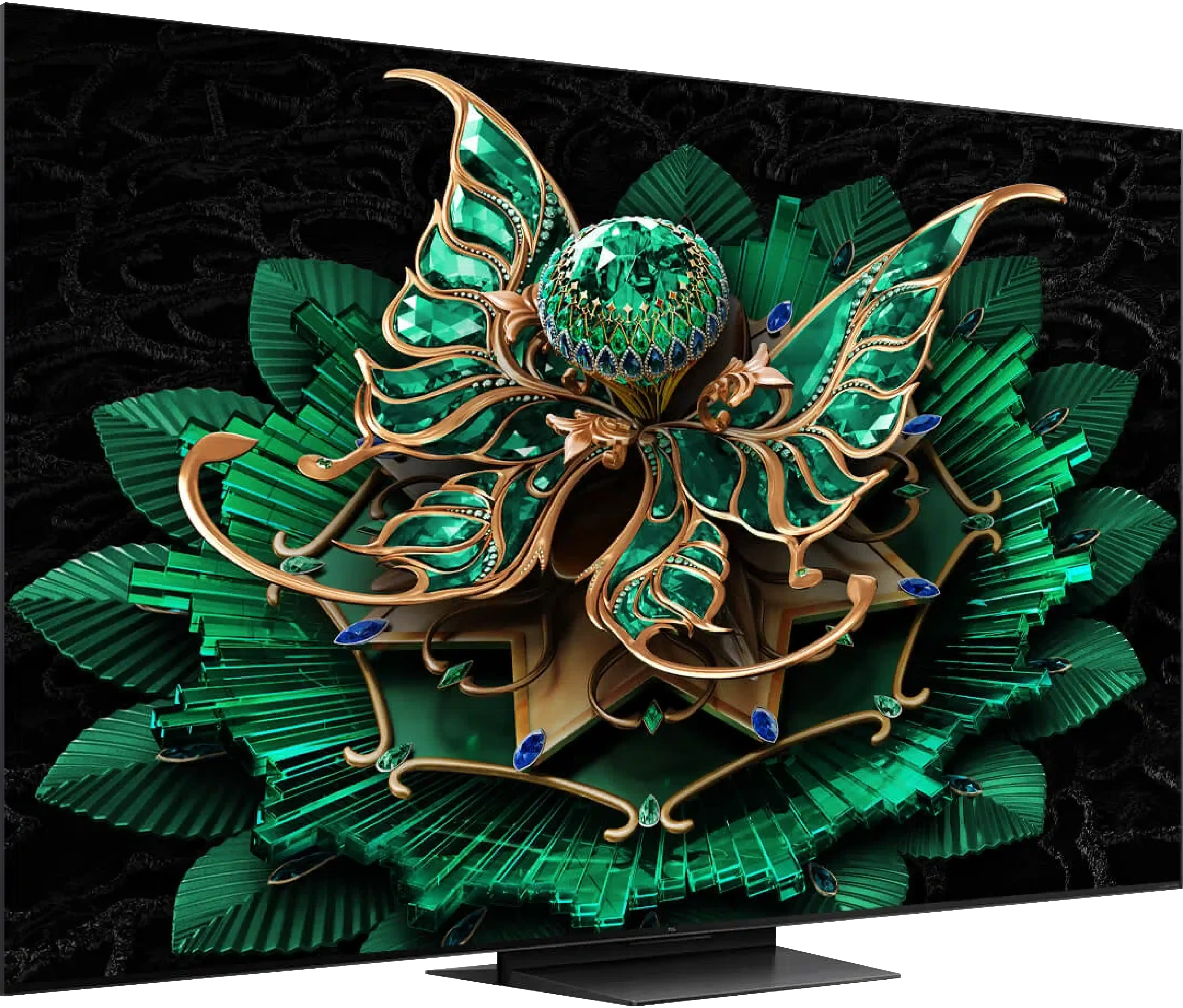
Panel type: LCD IPS
Resolution: 3840x2160
System: VIDAA
Model year: 2024
Complete the survey to find out the result

Panel type: LCD VA
Resolution: 3840x2160
System: Google TV
Model year: 2025
Complete the survey to find out the result

Overall rating
7.0
7.1
Movies and series in UHD quality
6.4
6.7
Classic TV, YouTube
6.3
6.5
Sports broadcasts (TV and apps)
6.6
6.4
Gaming on console
8.0
8.5
TV as a computer monitor
7.6
8.4
Watching in bright light
6.2
6.1
Utility functions
8.9
7.7
Apps
7.7
9.6
Sound quality
7.0
7.0
Complete the survey to find out what fits your preferences
Advantages
Wide viewing angles thanks to the IPS panel
Good colour potential after calibration
High refresh rate (144 Hz), VRR, ALLM and G-Sync for gamers
Support for Dolby Vision
A considerable number of additional features (recording, AirPlay, mirroring)
Support for key audio formats (Dolby Atmos, DTS:X)
Relatively low input lag
Very good black - VA panel with a large number of Mini-LED zones
High brightness in HDR - over 1000 nits
Excellent for gamers - HDMI 2.1, low input lag, VRR, ALLM, etc.
Good motion smoothness - 144Hz panel
Supports multiple HDR formats: HDR10, HDR10+, Dolby Vision
Google TV operating system with access to a vast array of applications
Pleasant sound from built-in speakers
Disadvantages
Average contrast and black level
Issues with subtitle playback from USB
Missing support for HGIG
Brightness management issues in HDR in some scenes
Unavailability of some popular music applications (Spotify, Tidal)
Google TV can operate with minor stutters
No USB recording and PiP functionality
Our verdict
There are televisions that come for testing, and you immediately think: “oh, just another average one, probably like many others.” And basically… that’s true. The TCL C7K doesn’t try to dethrone OLEDs, nor does it shout from the box “revolution!” Yet, after a few days of testing, it’s hard not to think: “wow, this is really good equipment.” And that’s exactly what the C7K is. The biggest asset of the C7K is its decent picture at a reasonable price – MiniLED and quantum dots do their job here. The colours are vibrant, the brightness satisfactory, the contrast impressive, and with the right settings, you can truly enjoy viewing in the best quality. The second strong point is the smoothness of motion – both in sports and games. Support for HDMI 2.1, variable refresh rates, 144 Hz, and a whole host of other features make gaming on this TV a pure joy. Then there’s Google TV, which – despite some minor shortcomings – provides access to nearly an endless library of applications. Voice control, quick access to YouTube, Netflix, AirPlay support – it has everything you need for everyday use. Are there downsides? Of course. The Google TV system can have moments of “hesitation,” and MiniLED – being MiniLED – can stumble on very complex film scenes. But these are details. After all, the C7K is a mid-range model – and in this class, it performs simply excellently. So if you are looking for a reasonably priced, modern television with Google TV that looks good, works well, and plays quite decently without ruining your budget – the TCL C7K definitely deserves your attention.
TV appearance





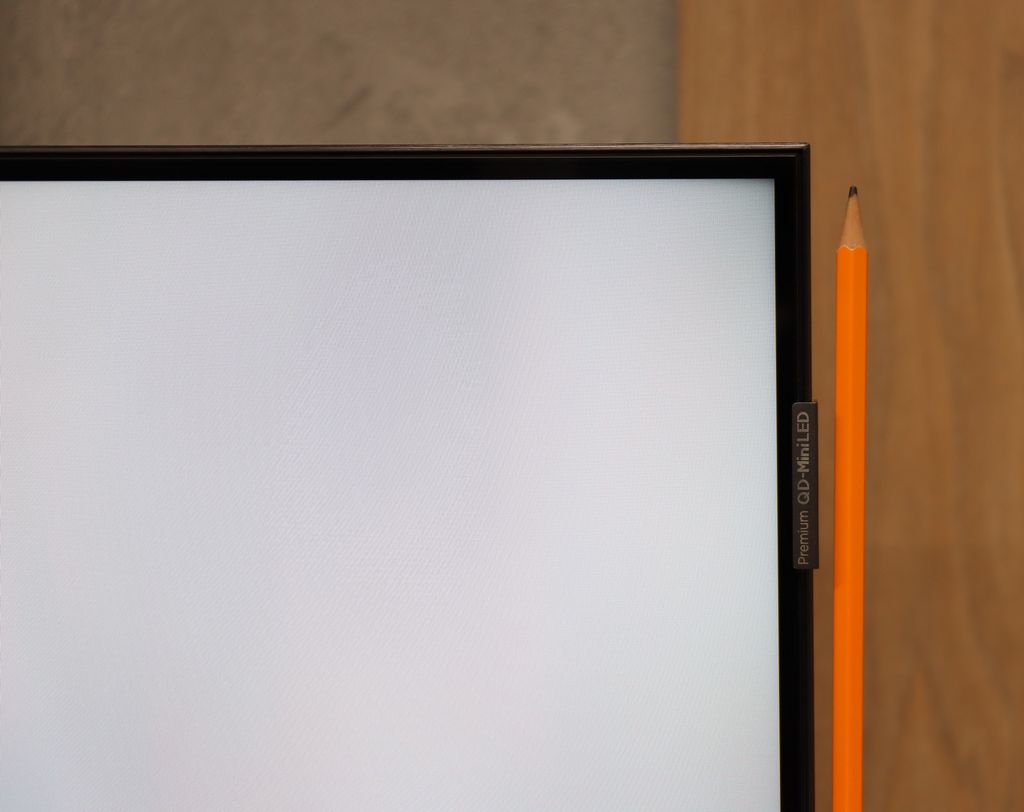
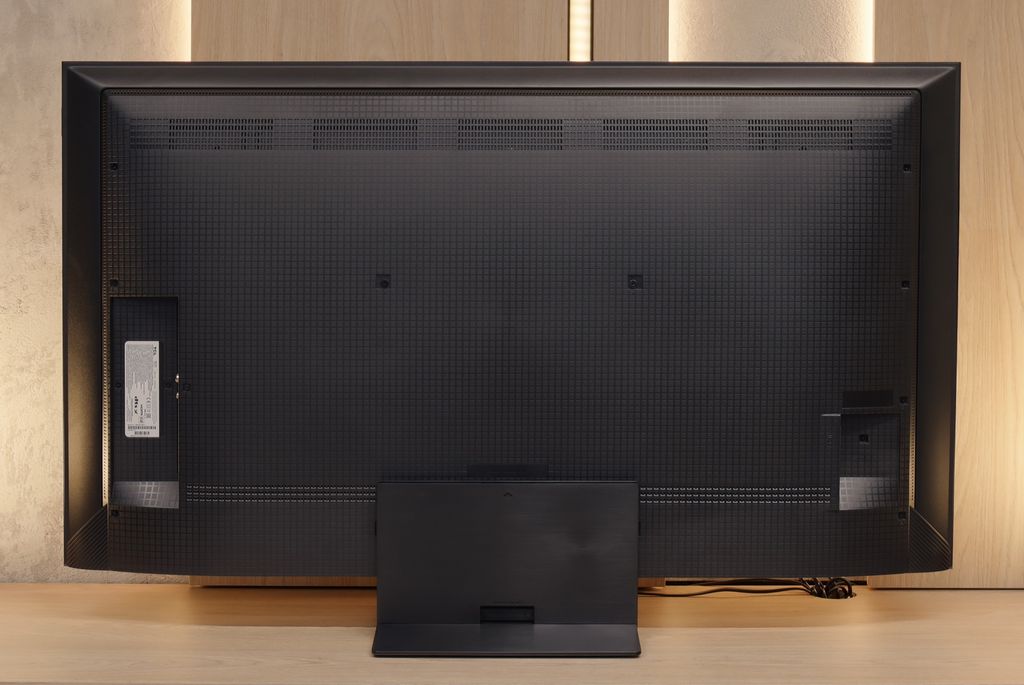
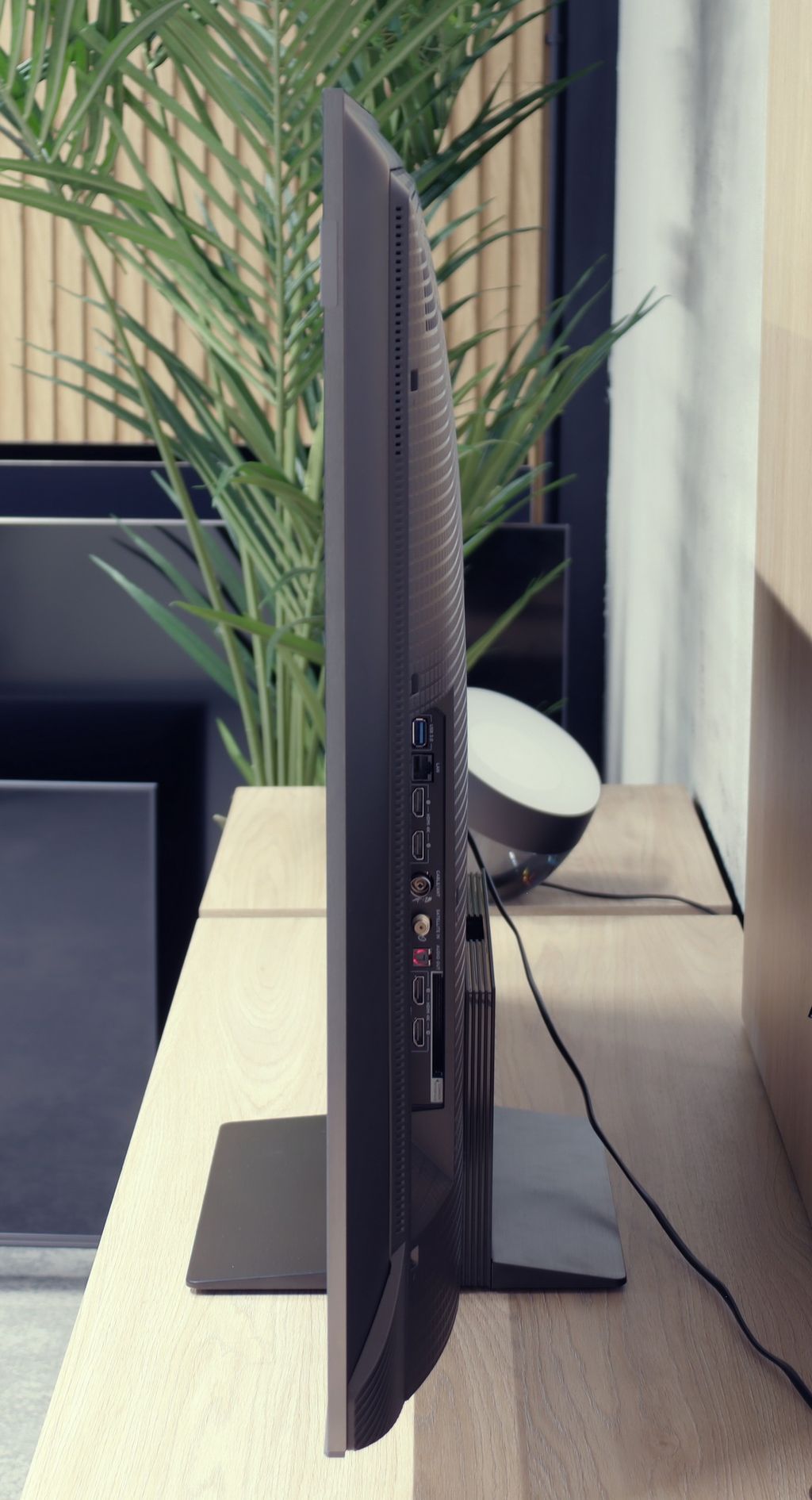
Contrast and black detail
5/10
7.1/10
Local dimming function: Yes, number of zones: 32 (4 x 8)
Local dimming function: Yes, number of zones: 336 (14 x 24)
Contrast:

Result
7,850:1

Result
4,150:1

Result
4,400:1

Result
2,500:1

Result
1,550:1

Result
161,000:1

Result
18,750:1

Result
13,150:1

Result
6,300:1

Result
4,200:1
Halo effect and black detail visibility:

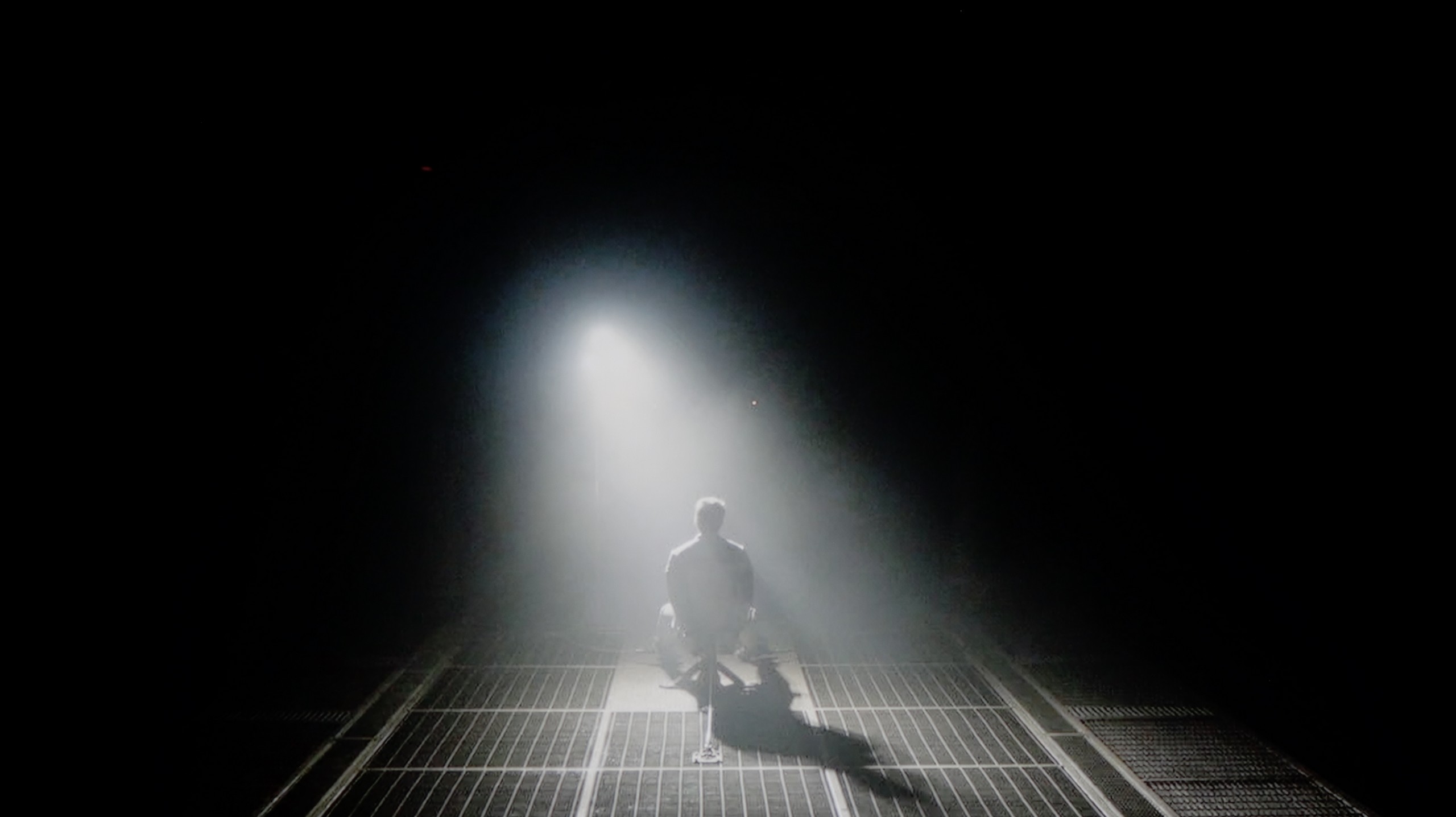
The tested Hisense E7NQ PRO in the 65-inch version features an IPS panel, which unfortunately is not known for high contrast. As a result, black appears slightly 'washed out' and at times takes on a silvery hue, which is clearly visible in our pictures. The manufacturer tried to address this by equipping the television with local dimming functionality. Unfortunately, in this 65-inch model, we only have 32 zones available, which, while somewhat helpful, is definitely not enough to achieve impressively high results—especially since the panel itself is unable to deliver incredibly deep blacks.
During testing, we observed highly variable results. In optimal conditions, it managed to reach around 7800:1, which can be considered decent; however, in more challenging scenes, the contrast dropped to around 2000:1. Such values are at best average and simply do not befit a television in this price range. Ultimately, while local dimming somewhat salvages the situation, it lacks truly deep, inky blacks and contrast that would leave a greater impression on us.
The 50-inch TCL C7K that we tested surprised us right from the start – it’s the smallest model in the series, yet it comes equipped with a VA panel with MiniLED backlighting and – attention – as many as 336 dimming zones. For comparison: many significantly larger televisions from higher tiers would be eager to boast such a number. Here we have it in the 50-inch version. Sounds promising, doesn’t it? So how does this translate into real movie-watching experiences? In the vast majority of tested scenes – very well. The contrast was high enough that it reached even six-digit values in measurements, which practically means very deep blacks and well-separated highlights. In scenes from films like The Revenant or Oblivion, the effect was impressive, matching the best LCD screens in this class.
However, not everything went perfectly. Despite the impressive number of zones, managing them was not always exemplary. In more complex scenes, where small light sources or a high level of detail appeared, the television had issues with the so-called halo effect (a glowing halo around bright objects) or overly aggressive dimming of the image. In such situations, contrast could either collapse due to overexposure of certain zones or, conversely – details in bright areas disappeared because the zones suppressed the light too much. Nonetheless, it is worth noting that in the vast majority of scenes, the contrast was more than satisfactory. And taking into account the size of the television and the price, the final effect will satisfy not just average users.
HDR effect quality
5.1/10
5.4/10
Luminance measurements in HDR:

Result
408 nit

Result
299 nit

Result
446 nit

Result
215 nit

Result
527 nit

Result
1051 nit

Result
185 nit

Result
454 nit

Result
200 nit

Result
836 nit
Scene from the movie “Pan” (about 2800 nits)


Scene from the movie “Billy Lynn” (about 1100 nits)


Static HDR10


Dynamic: Dolby Vision
Dynamic: Dolby Vision


HDR luminance chart:
TCL C7K / QM7K
Luminancja HDR
Luminance of RGB colors
Hisense E7NQ PRO
Luminancja HDR
Luminance of RGB colors
Based on the luminance chart, which indicates around 550 nits, it can be said that Hisense E7NQ PRO theoretically has the potential to somewhat "magically" enchant us with its image in HDR. While testing various scenes from films, we noticed that the television continually tries to balance maintaining appropriate brightness with preserving the deepest blacks possible. In favourable conditions – for instance, during a scene from “The Meg,” where the screen is flooded with bright light – this brightness can indeed impress us. In such moments, we feel that HDR actually adds that "something" to the image. Unfortunately, when more challenging shots appear on the screen with small, bright elements on a dark background, the situation looks significantly worse. The brightness then drops to 200-300 nits, which is decidedly too little to truly distinguish HDR from standard SDR.
It is clear that the television tries, but hardware limitations – mainly the limited number of local dimming zones – prevent it from fully spreading its wings. The final effect is therefore often quite uneven and just as mediocre as in the contrast tests. However, it deserves credit for its impressive coverage of the DCI-P3 colour gamut at 97%. Thanks to this, the television can display a truly wide range of colours, which, in suitable scenes, can give us at least a taste of the true HDR effect. It’s just a shame that the overall experience is not complemented by better control of brightness and contrast.
TCL C7K is one of the brightest MiniLED televisions in its price range. Under the best testing conditions, the screen managed to achieve over 1200 nits, resulting in impressive, at times almost blindingly bright scenes. And most importantly – this is not just a theory based on measurements. In practice, the brightest parts of films can shine with true cinematic grandeur. Fans of home HDR cinema should be truly satisfied.
The impression is excellent, especially in scenes with large areas of brightness – a white sky, explosions, sun reflections, or magical sunsets can surprise with an intensity of light that is rarely seen in this price range.
However, it gets a bit worse when more challenging scenarios appear on the screen, as described when discussing contrast – that is, images full of details, with small, bright elements on a dark background. In such cases, the C7K often decides to preserve black levels at the expense of brightness. An example? Scenes from the films Sicario 2 or Life of Pi, where small light sources (like a distant lantern) can become less visible, and details in the lights are simply dimmed or blend into the background.
For many viewers, this may be an acceptable compromise – as we achieve deep black levels and a pleasing plasticity of the image. Nevertheless, it is worth being aware that the visibility of small details in bright areas is not this model's strongest suit. It is simply a technological limitation that still exists – even with over 300 zones.
Factory color reproduction
5/10
6/10


Factory Mode
After calibration
When we took our copy of Hisense E7NQ PRO out of the box, we immediately began to check the available picture modes. Among them, the Filmmaker mode seemed the most promising, although it too was not without its flaws. With standard SDR content, we noticed a clear tendency for excessive red enhancement, which made the image unnaturally warm. This was particularly evident in the comparative photo attached below. Conversely, when we switched to HDR content, the situation went in the opposite direction. This time, blue was dominant, and red was scarce, resulting in a cool effect, at times almost "shop-like" — although not as drastic as in those modes that are actually intended for display in exhibitions. As a result, in our tests assessing colour reproduction, these disturbances in colour balance led to significant errors.
Additionally, the television had issues with reproducing brightness characteristics. At lower resolutions, it noticeably brightened the darkest elements of the image, and with HDR content, the brightness curve (eotf) simply wouldn't conform as it should. Initially, the television excessively darkened the smallest details, only to then overly brighten larger areas. Fortunately, the E7NQ PRO provides us with plenty of calibration tools, so knowing that there is potential within it, we decided to take matters into our own hands and try to adjust it to eliminate these problems.
A new feature in TCL televisions for 2025 is the long-awaited Filmmaker mode, which until now has been found in most competing brands. This is great news, as this mode is considered to be the truest to the original vision of the creators and is often recommended by enthusiasts of good picture quality. Unfortunately, as is often the case, the mere presence of this mode does not guarantee perfection. The Filmmaker mode in the TCL C7K is not without its flaws. There can be criticism of the incorrect white balance, particularly a slight dominance of blue, which resulted in cool, somewhat greyish skin tones. But that was not the biggest issue. The main complaint was the excessive brightness exposure, which is clearly visible on the gamma and EOTF graphs. The image was simply too bright, at times even blown out, which affected not only the texture of scenes but also the overall viewing experience. Some details were simply lost, and the entire image looked as if someone had slightly overcooked the brightness slider. As always, we decided to check what could be extracted from this after calibration. And that’s where it started to get really interesting…
Color reproduction after calibration
7.1/10
7.5/10




Thanks to the tools available in E7NQ PRO, we managed to extract quite a decent image from it, especially with lower quality content. After refining the white balance of the SDR materials, the colours look much more natural, and what we see on the screen seems closer to the vision that the manufacturer intended to present. Additionally, we improved the brightness characteristic (Gamma), which means the television is no longer prone to excessive brightening, and everything presents itself distinctly better than before our intervention.
We also managed to achieve some results with HDR materials, although it isn’t quite as rosy here. Indeed, the white balance has approached an acceptable level, but the problem lies elsewhere. It concerns the EOTF curve, which is the way the television manages brightness and tonal range of the image. At first glance, it might seem that the biggest issue only relates to mid-tones being overly brightened. However, after more detailed testing and enabling the filters for displaying the EOTF curve, it becomes apparent that the receiver tends to brighten the entire screen. This appears to be a limitation arising from the small number of local dimming zones and generally modest brightness management capabilities. Such hardware limitations are simply insurmountable. Despite this, after our calibration, the image is noticeably better than at the outset. One just needs to be aware that in terms of contrast and brightness management, this model has its limits, which even good calibration cannot fully overcome.
After calibration, the TCL C7K showcased itself in a really good light, especially when it comes to SDR content. We managed to precisely tune the white balance, colour gamut, and brightness characteristics to the point that colour errors on the ColorChecker palette dropped below a value of 2. For the uninitiated – this is nearly a perfect result, which means that the image is very close to what the creators intended. Unfortunately, the situation was worse with 4K HDR content. Although we managed to gently stabilize the white balance and correct its previous errors, it was still evident that the television has certain "MiniLED traits," especially in brightness management. When we checked how the C7K handled the EOTF curve on actual film scenes, rather than just on synthetic test patterns, it turned out that the screen still tends to slightly brighten the entire image. This impacts the overall experience – blacks lose some depth, and the image becomes less contrasty than it should be. Despite these minor shortcomings in HDR content, the overall reception of materials – especially in SDR – is truly very good. After calibration, the C7K can display an image that can compete successfully with much more expensive models. Good colour tuning, natural skin tones, and pleasant brightness make movie sessions and everyday viewing of content more than satisfactory.
Smoothness of tonal transitions
9.2/10
8.6/10












We must honestly admit that the fluidity of tonal transitions in this television is among the best we have had the opportunity to test in 2024. Even in really demanding scenes, we hardly notice any distinct "steps" between colours. Of course, with a keen eye, one can detect minor flaws, but those are at a level that is virtually microscopic. You really need to have a very "alert" eye to catch them. This, in turn, means that while watching even the most complex shots in a full palette of colours, one can simply focus on the story and visual experiences without the irritating, artificial effect of posterisation.
The TCL C7K handles colour gradation very well – in most of the tested scenes, tonal transitions were smooth, and colours blended together without visible outlines or the artificial "blot" effect. In everyday use, it's hard to find anything to criticise – the picture looks natural, without annoying transitions or digital artifacts. Certain limitations only arise in very dark tones – particularly in a heavily muted grey palette, where the television may struggle to reproduce the ideal gradation. But this is absolutely understandable, as even many significantly more expensive models in this regard simply falter. Fortunately, these situations are rare and do not significantly impact the overall impression.
Image scaling and smoothness of tonal transitions
6/10
5.5/10
Smooth transition function


Image without overscan on the SD signal


When it comes to the function of smoothing tonal transitions in lower quality materials, the "smooth and gradient image" feature in Hisense E7NQ PRO unfortunately does not impress. At the lowest setting, the change is hard to notice at all – it is rather a cosmetic improvement. Switching to "Medium" mode yields a noticeable effect, but it is still nothing special, and in the process, the television begins to excessively interfere with other elements of the image, which can look unnatural.
Moreover, image scaling is rather average. On the test screen, where a portrait of a model and text are displayed, slight jagged edges are visible, making the overall appearance less smooth and aesthetically pleasing than one would expect in this class of device. It's simply difficult to talk about truly effective improvement in the quality of lower resolution.
TCL C7K is equipped with a feature that, according to the manufacturer, is meant to smooth out unwanted colour transitions – a sort of rescue for less successful tonal shifts. It is called "Gradual Smoothing" and… well, it sounds ambitious, but in practice it works very poorly. Regardless of whether we set it to a low or high level, the difference is minimal. Worst of all, the feature can cut out elements from the picture that should be there. Fortunately, film grain remains untouched, so at least it doesn’t smooth everything indiscriminately, but still – it’s better to simply turn this option off.
When it comes to scaling lower resolution content, it is somewhat better. SD and HD materials look quite decent, although at times we had the impression that the image loses sharpness and becomes too soft – as if something took away its definition. Fortunately, with very low sources (e.g. 576p), there was no overscan effect, meaning the picture was not artificially cropped – everything fit on the screen as it should.
Blur and motion smoothness
7/10
7.5/10

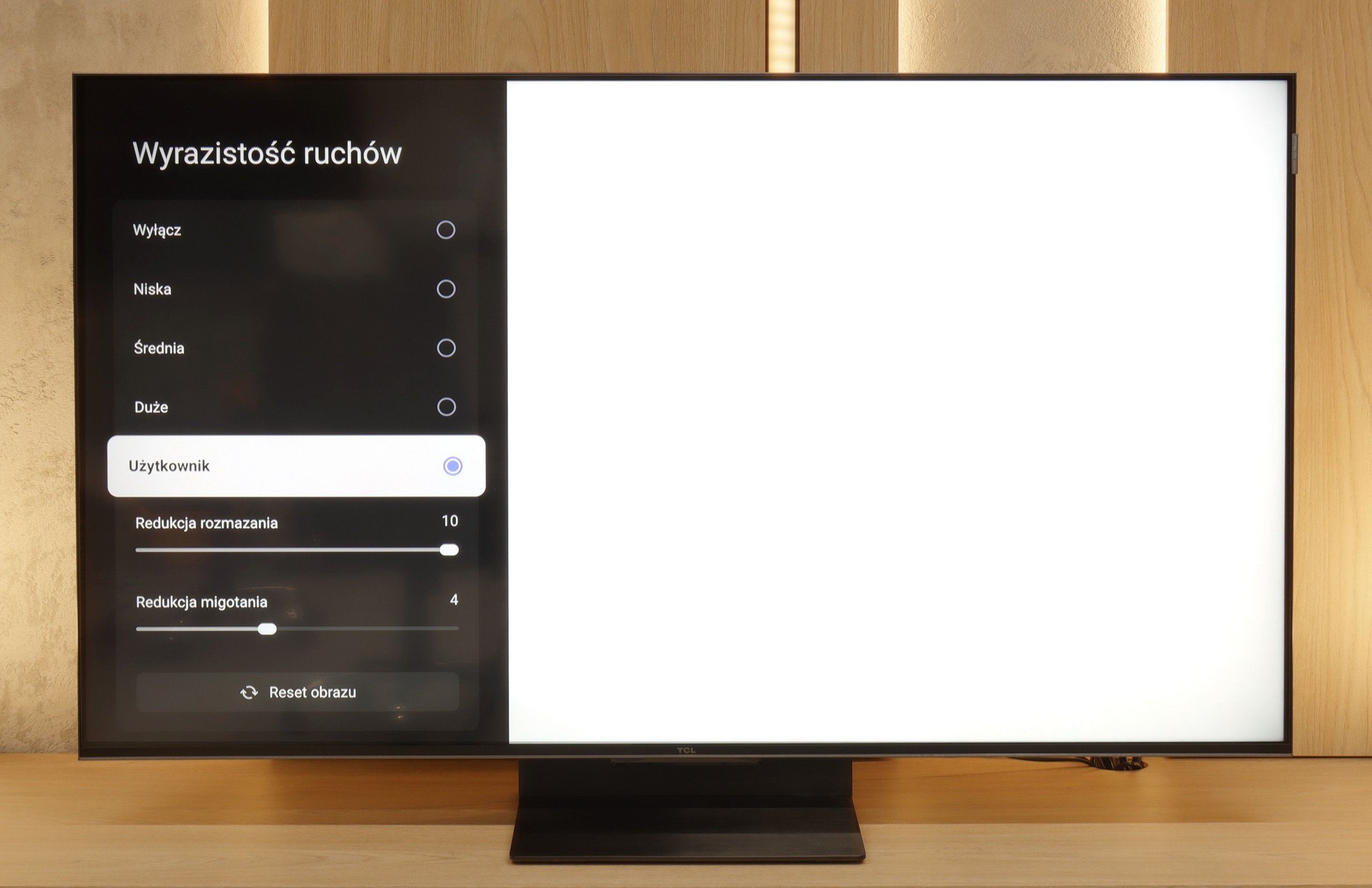
Blur (native resolution, maximum refresh rate):





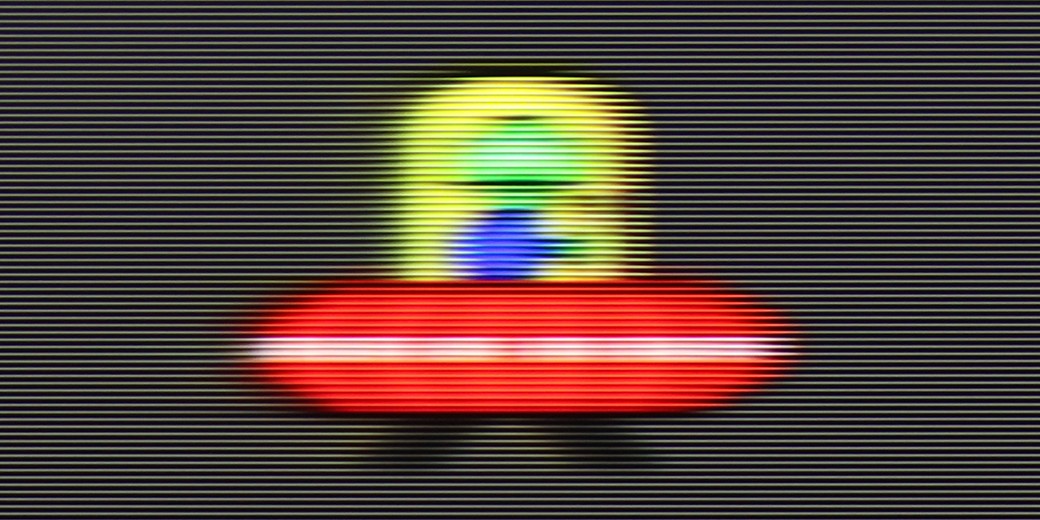
Blur (BFI function enabled):



Smużenie ():
Smużenie (4K 144Hz):



Thanks to the use of a 144 Hz panel, E7NQ PRO performs excellently with nearly every type of content. Whether we are watching fast-paced matches, dynamic games or action films – the smoothness of motion leaves a good impression. When it comes to films, the manufacturer has equipped the television with two key tools: "motion blur reduction" and "judder reduction". Each of these functions can be adjusted on a scale from 1 to 10.
At lower values, the processing is subtle, barely noticeable, and gently smooths out motion without compromising the cinematic quality of the image. The higher we move up the scale, the more the television interferes with the presented material, smoothing out motion more intensely, and consequently – minimising any judders or micro-cuts. Conversely, the highest settings can resemble the so-called "soap opera effect", which makes the image appear excessively smooth, slightly losing its filmic atmosphere. However, with such a scale, we can find a happy medium, adjusting the smoothness of motion to our own preferences.
The TCL C7K handles motion fluidity really very well. The matrix used in it offers a refresh rate of 144 Hz, which in itself suggests that this television is more than just a regular "60 Hz" panel. Furthermore – if we connect the C7K to a computer and set the resolution to Full HD. But we'll write more about this in the paragraph about gamers and PC collaboration. Returning to everyday use – both sports and films look very good here. Thanks to the fast panel and well-functioning motion smoothing, the C7K is great for watching matches, but also for movie screenings. In the menu, we find two sliders – motion blur reduction and flicker reduction – which allow us to adjust the fluidity effect to our own preferences. At lower settings, we get a more cinematic effect, with slight stuttering motion. At higher settings – the picture becomes more theatrical, fluid to the point of excess. Everyone has their own preferences – anyone can set it to their liking.
Console compatibility and gaming features
8.5/10
9.8/10
- ALLM
- VRR
- VRR range48 - 144Hz48 - 144Hz
- Dolby Vision Game Mode
- Correct implementation of HGIG
- 1080p@120Hz
- 1440p@120Hz
- 4K@120Hz
- Game bar

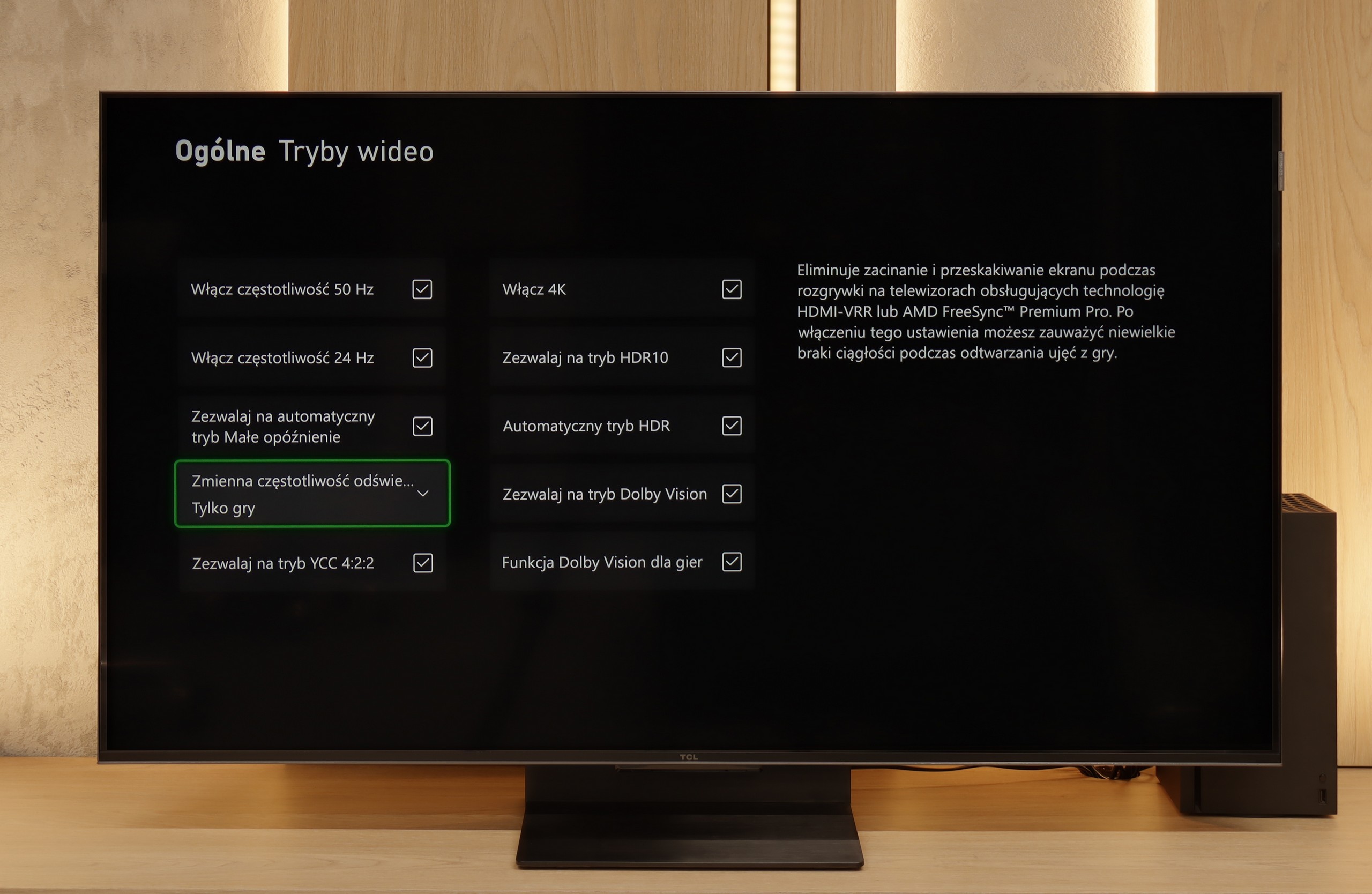

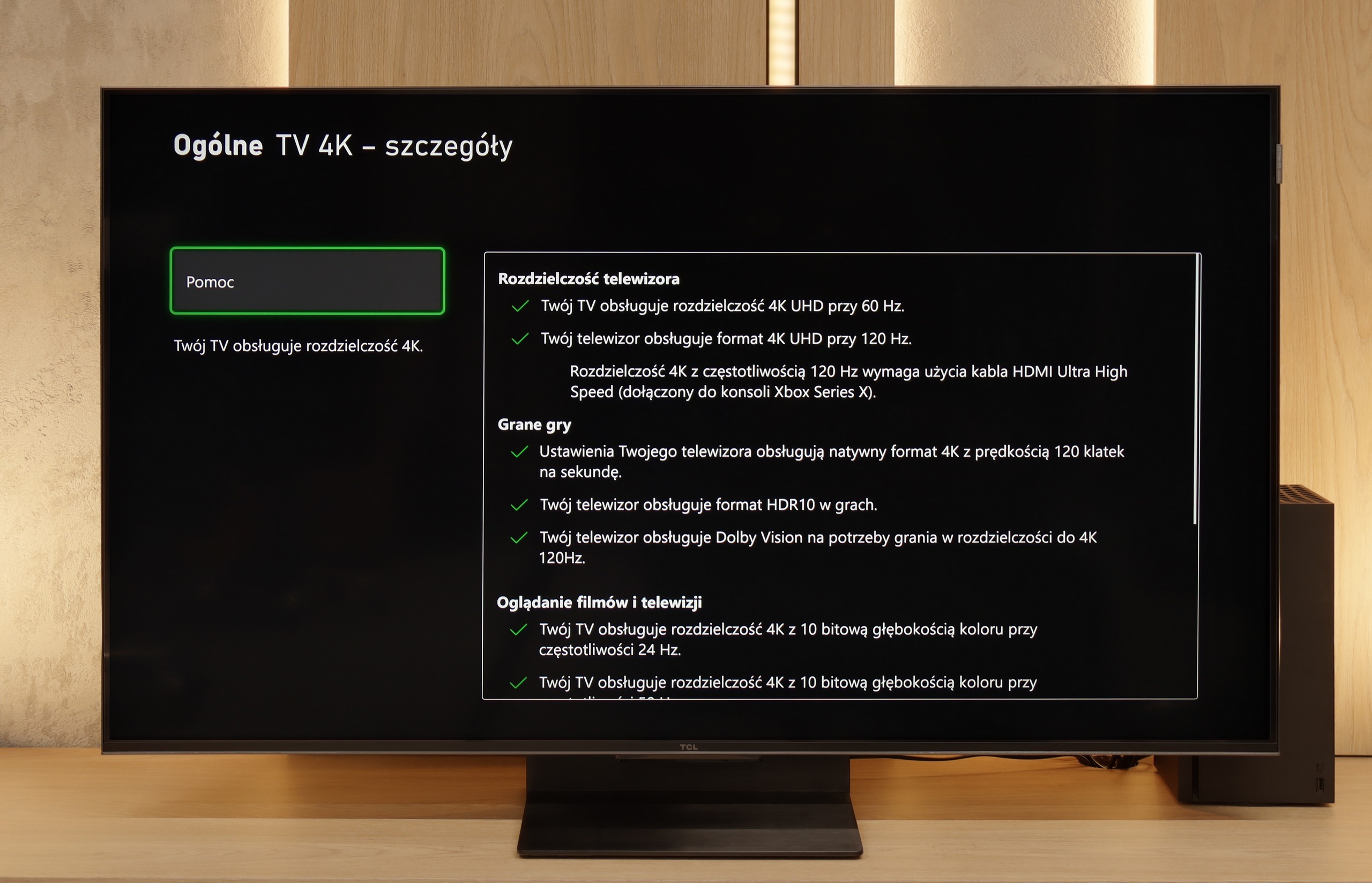

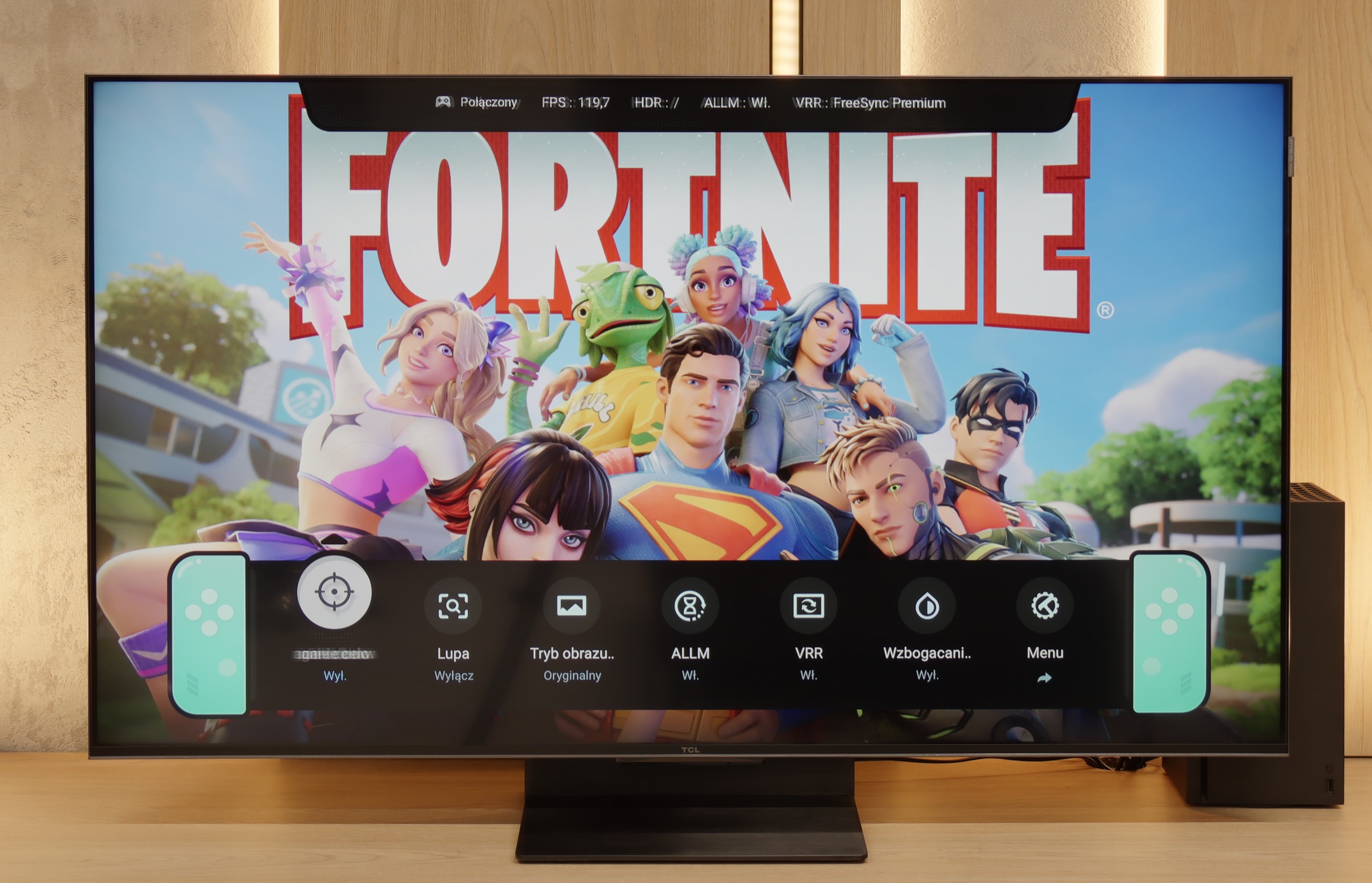

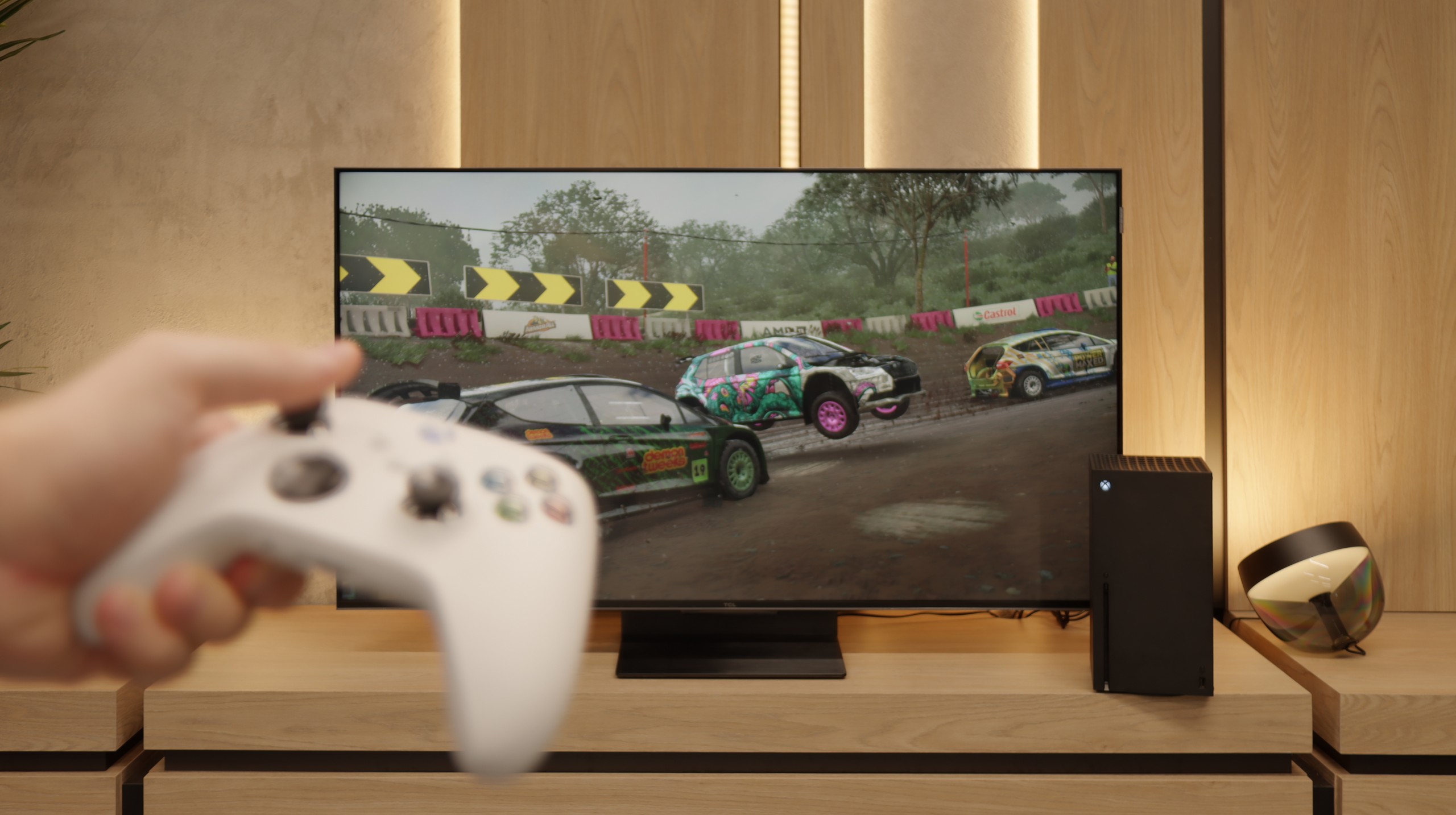
If we sometimes enjoy turning on the console and immersing ourselves in the world of games for long hours, E7NQ PRO can make quite an impressive impact. Thanks to the 144 Hz refresh rate, gameplay is surprisingly smooth, and support for HDMI 2.1 and VRR ensures that the picture doesn't 'tear' even during the most dynamic actions. Additionally, there's ALLM, which automatically sets the lowest latency as soon as we switch to the console – so we don't have to fiddle with the options ourselves.
A major plus is also the ability to run games in Dolby Vision, making colours and contrast simply look better. Hisense has also added a clear 'gamebar', allowing us to constantly monitor the most important parameters and change settings without leaving the game. The only thing we might regret a bit is the lack of HGIG support. While it may not be a crucial element, it could matter to some gamers aiming for the most faithful representation of the creators' vision. Nevertheless, in practice, the E7NQ PRO performs excellently and provides truly enjoyable gaming experiences.
The TCL C7K is a television that on paper appears to be the dream equipment for gamers – and most importantly, it holds up in practice too. To start with good news: there are two full-bandwidth HDMI 2.1 ports, so we can easily connect both a console and a computer, taking advantage of all their capabilities. The panel itself supports a refresh rate of 144 Hz, which gives a significant advantage in dynamic games. There is also a complete set of gaming features: VRR (variable refresh rate), ALLM (automatic low-latency mode), and support for Dolby Vision in games. There is also the HGiG mode, which allows for HDR effects consistent with the creators' intentions. GameBar, an information bar for gamers. It works quickly, looks clear (like a Nintendo console👌), and shows what matters most: the current frame rate, VRR status, and even HDR parameters.
Input lag
9.9/10
9.7/10
SDR
HDR
Dolby Vision
In this regard, Hisense E7NQ PRO really delivers. At a frequency of 60 Hz, we recorded around 15 ms, and at 120 Hz, the latency drops even to 6 ms, allowing for very quick response and smooth control in games. It is also worth mentioning that even in Dolby Vision mode, the input lag does not increase drastically. This means we can enjoy better image quality without having to sacrifice responsiveness, which will certainly please any avid gamer.
When it comes to delays, the C7K gives no reason for complaints. In games at 120 Hz, input lag is around 10 ms, which means the television responds really quickly. And interestingly – even in Dolby Vision mode, the result is very similar, which is not always the standard. Good job, TCL. At 60 Hz, the lag does increase a bit, but that's completely normal and affects virtually every television with a refresh rate of 120Hz and above. The most important thing is that everything still runs smoothly and there’s no feeling that something is not responding to our actions.
Compatibility with PC
7.6/10
8.4/10

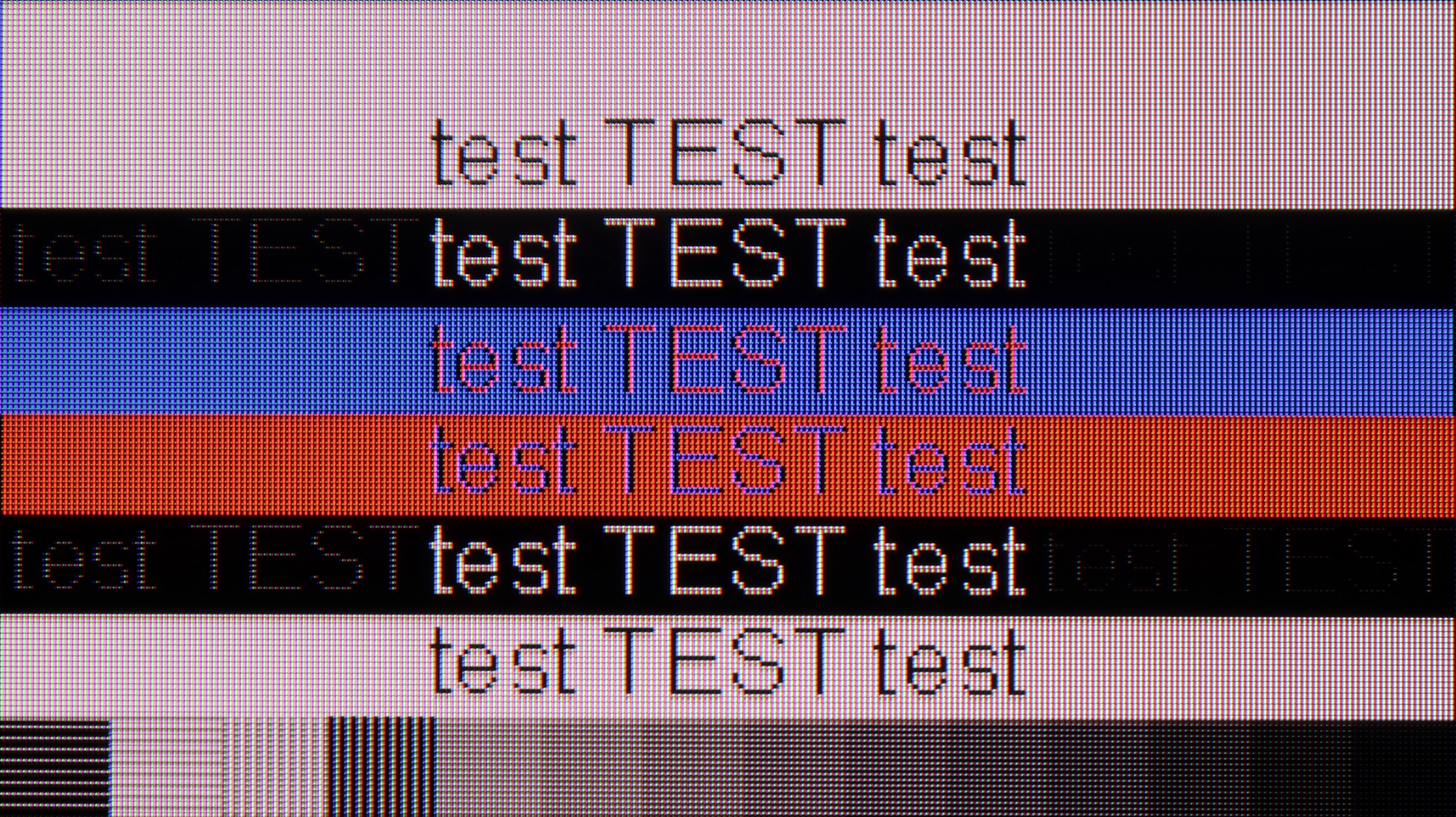
By connecting the E7NQ PRO to a computer, we will have no reason to complain. The overall readability of the fonts is quite good, although with very thin, horizontal lines (the so-called “serifs” of letters) we noticed a slight dimming. This is not a major issue, but it's worth mentioning if we plan to spend long hours in text editors or browsers.
As for gaming on PC, the television shows its true colours. Support for G-Sync, connection to a 144 Hz panel, and low input lag ensure that even the most demanding titles run smoothly and responsively. As a result, we have a screen that will work well not only with a console but also as a solid “window” to the world of PC entertainment.
If we are going to connect the C7K to a computer – especially for gaming – there is definitely a lot to play for. We have 4K at 144 Hz, which already sounds great, but if we lower the resolution, the television can even display up to 280 Hz. In e-sports, where every fraction of a second counts, this really makes a difference. On top of that, there is support for G-Sync and FreeSync, so regardless of which graphics card we have – the image will be smooth, without any stuttering or tearing.
However, if we plan to place the C7K on a desk and use it like a monitor, it’s a bit less "rosy." Yes, it supports chroma 4:4:4, so fonts should be sharp, but with very dark letters, there is slight blurriness and dimming of the edges. This is not something that immediately stands out during gaming or watching, but when working with text – it can be distracting. In everyday use – it’s probably nothing to worry about, but if we plan to place a 50-inch screen a meter from our face, it’s worth keeping this in mind.
Viewing angles
6.5/10
3/10
In the case of Hisense E7NQ PRO, the viewing angles are definitely a strong point, thanks to the IPS panel. This means that when we look at the screen even from a significant angle, the colours and brightness do not "wash out" as much as they do in televisions with a VA panel. Of course, compared to OLED or QD-OLED screens, where the image remains practically unchanged from every angle, IPS still falls short. Nevertheless, among LCD televisions, it is hard to find a solution that guarantees viewing angles as good as those offered by IPS. Unfortunately, everything comes at a cost – in this case, one has to come to terms with average blacks and lower contrast.
There are no surprises here – the C7K has classic viewing angles for a VA panel. That is: sitting directly in front – it’s excellent. The colours look good, the contrast is strong, everything is in place. But just shifting slightly to the side and it starts to get worse – the image loses saturation, blacks turn grey, and the overall impression diminishes a bit. So, if we plan to watch together with a few people or have a sofa that takes up half the living room – it’s worth seating everyone a bit more centrally. You can watch from the side, but don’t expect miracles – it’s simply a characteristic of VA panels.
TV efficiency during daytime
6.2/10
6.1/10




Matrix brightness
Average luminance SDR
TCL C7K / QM7K: 475 cd/m2
Hisense E7NQ PRO: 478 cd/m2
On a bright day, E7NQ PRO performs quite well. The "satin" display diffuses light effectively, preventing reflections and glares from turning into distracting "spots" on the screen. With an average brightness of around 500 cd/m², you can comfortably watch television in a sunlit room without much struggle to see details or clear content. It's perhaps not at the level of the highest premium models, but in everyday use, it still performs quite decently.
Fortunately, the TCL C7K performs quite well in bright rooms. The applied panel has a satin finish that effectively suppresses reflections, which means we don't have to worry about lamp or window reflections even on sunny days. Importantly, the colours maintain their intensity and do not wash out, as can happen with weaker matte panels. In terms of brightness, the average for content like YouTube or regular television is slightly below 500 nits. This is not a record-breaking result – for example, the MQLED85 (C765) performs better in this regard. However, for everyday viewing during the day, it should work without major issues, provided we do not plan to place it opposite a south-facing window without curtains.
Details about the matrix
Subpixel Structure:

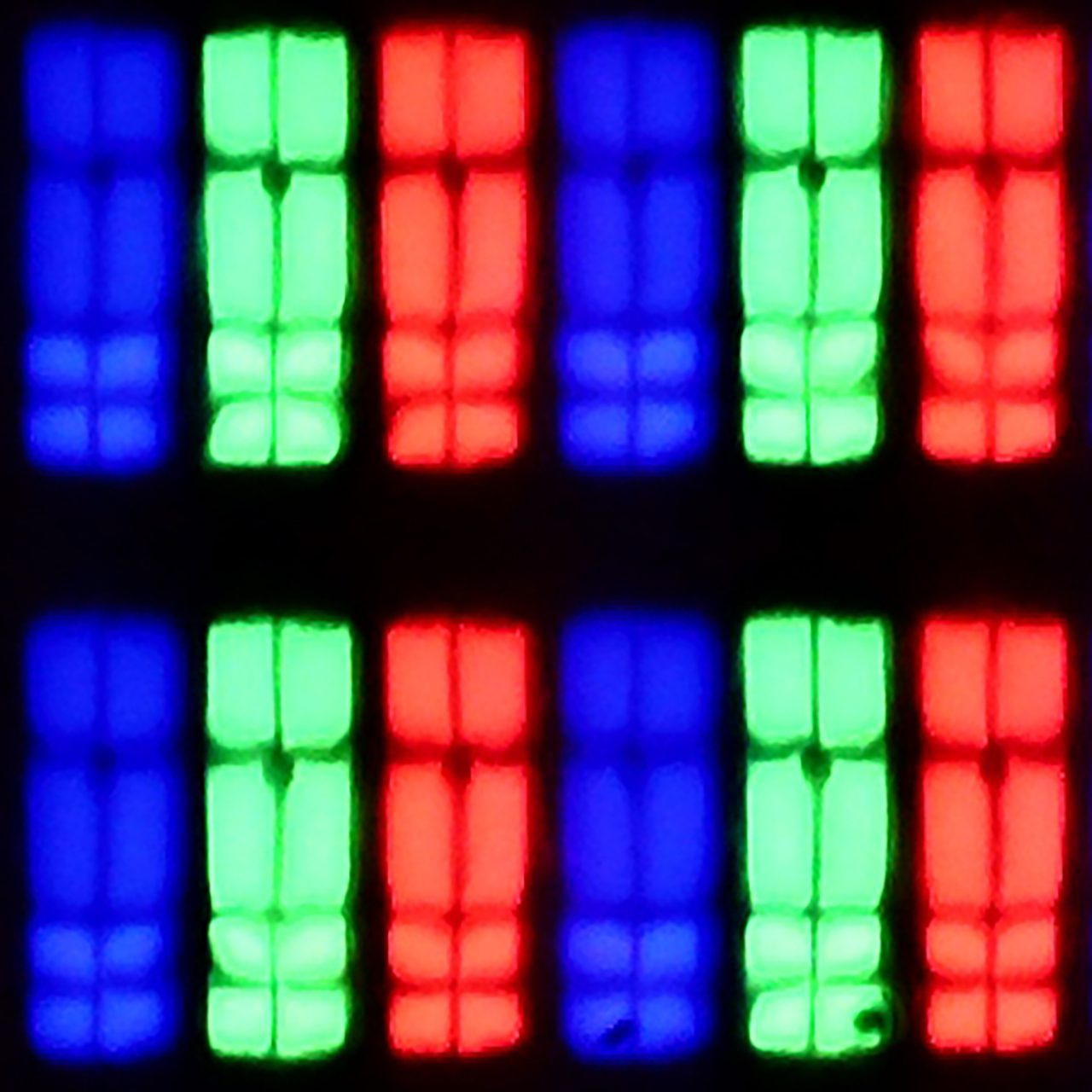
Panel uniformity:


Hisense E7NQ PRO
TCL C7K / QM7K
TV features
8.9/10
7.7/10
- HDMI inputs2 x HDMI 2.0, 2 x HDMI 2.1 48Gbps2 x HDMI 2.0, 2 x HDMI 2.1 48Gbps
- Other inputsRCA (Chinch)
- OutputsToslink (Optical audio), eARC (HDMI), ARC (HDMI), Mini-Jack (Headphones)Toslink (Optical audio), eARC (HDMI), ARC (HDMI)
- Network InterfacesWi-Fi 2.4GHz, Wi-Fi 5GHz, Ethernet (LAN) 100MbpsWi-Fi 2.4GHz, Wi-Fi 5GHz, Ethernet (LAN) 100Mbps
- TV receptionDVB-T, DVB-T2, DVB-S, DVB-S2, DVB-CDVB-T, DVB-T2, DVB-S, DVB-S2, DVB-C
Classic features:
- Recording to USB (terrestrial TV)
- Recording programming
- Picture in Picture (PiP)
- RF remote control (no need to aim at the screen)
- Backlit remote control
- Teletext
- Audio only mode
- Possibility to connect Bluetooth headphones to the TV
- Possibility to simultaneously use Bluetooth headphones and the TV speaker
Smart features:
- AirPlay
- Screen mirroring (Windows Miracast)
- Wyszukiwanie głosowe
- Voice search in native language
- Ability to connect a keyboard and mouse


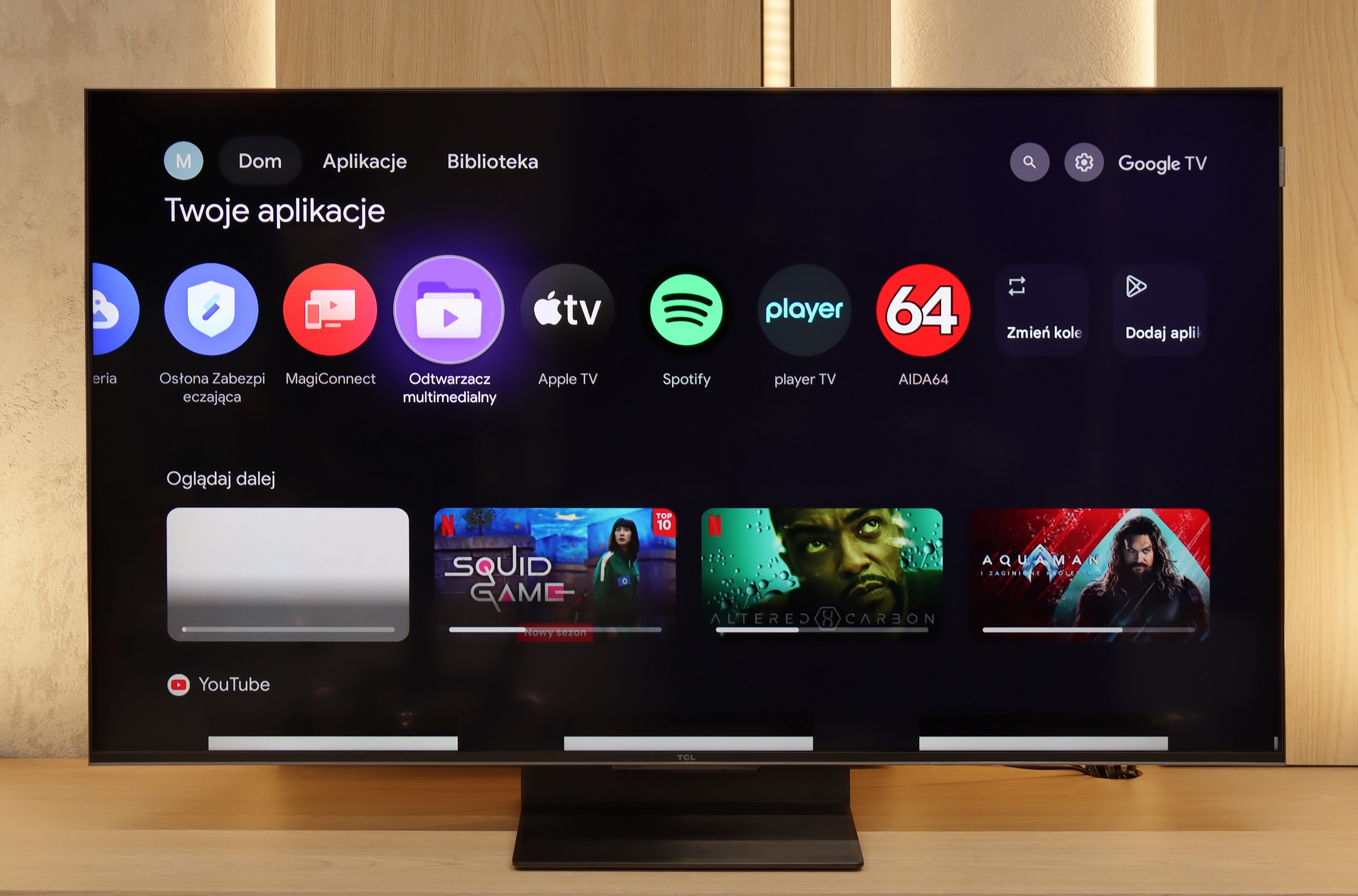
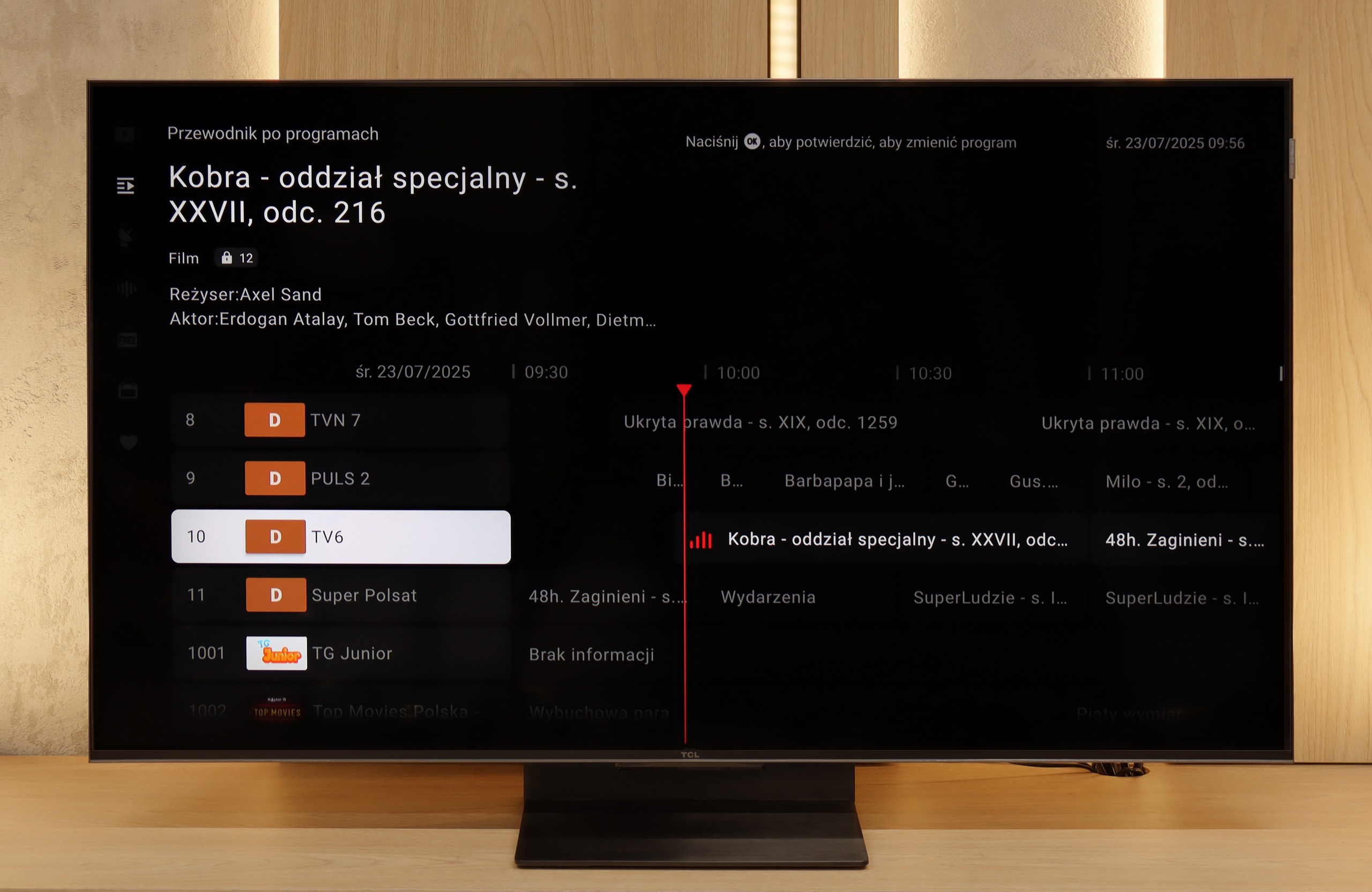
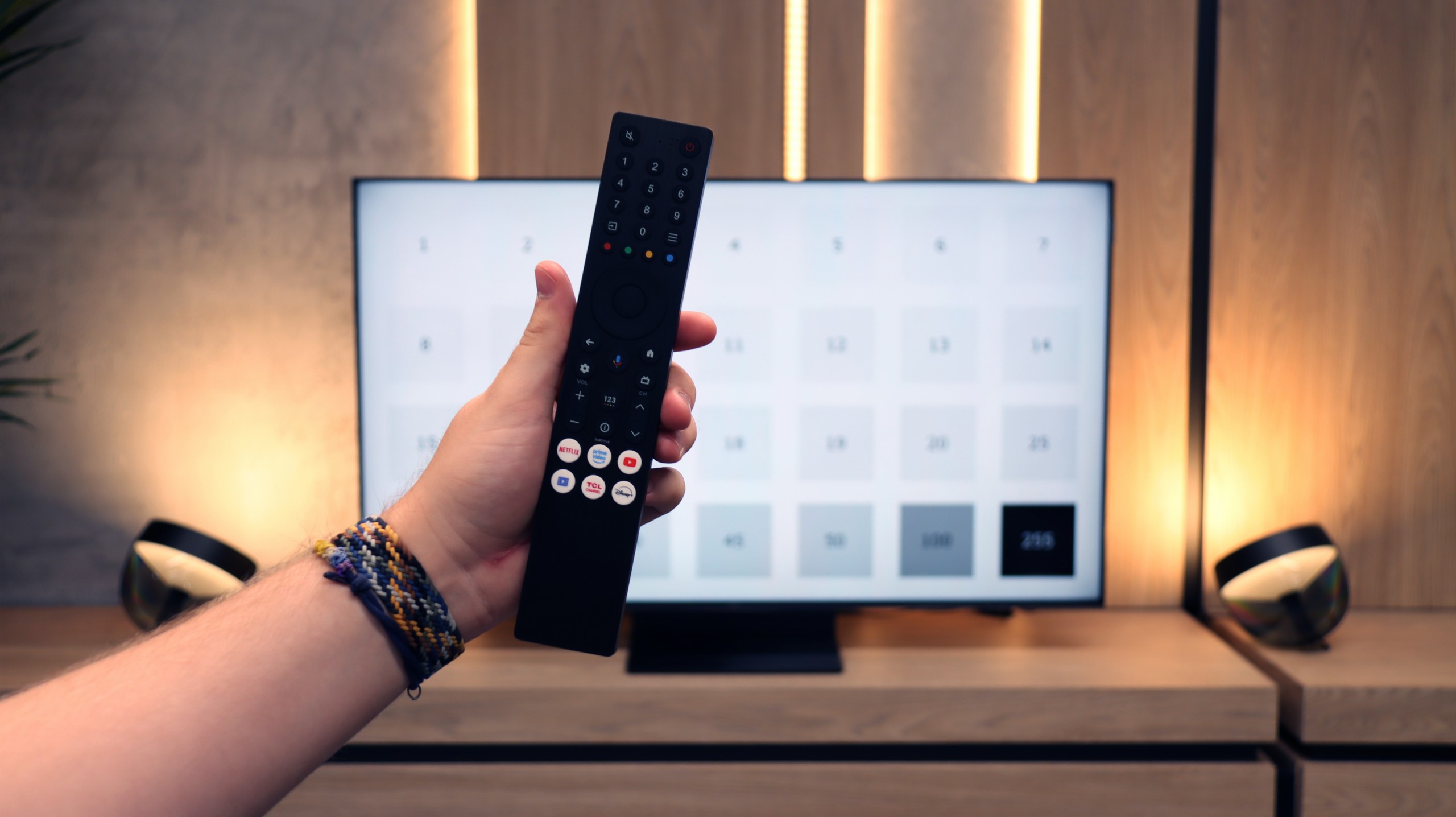
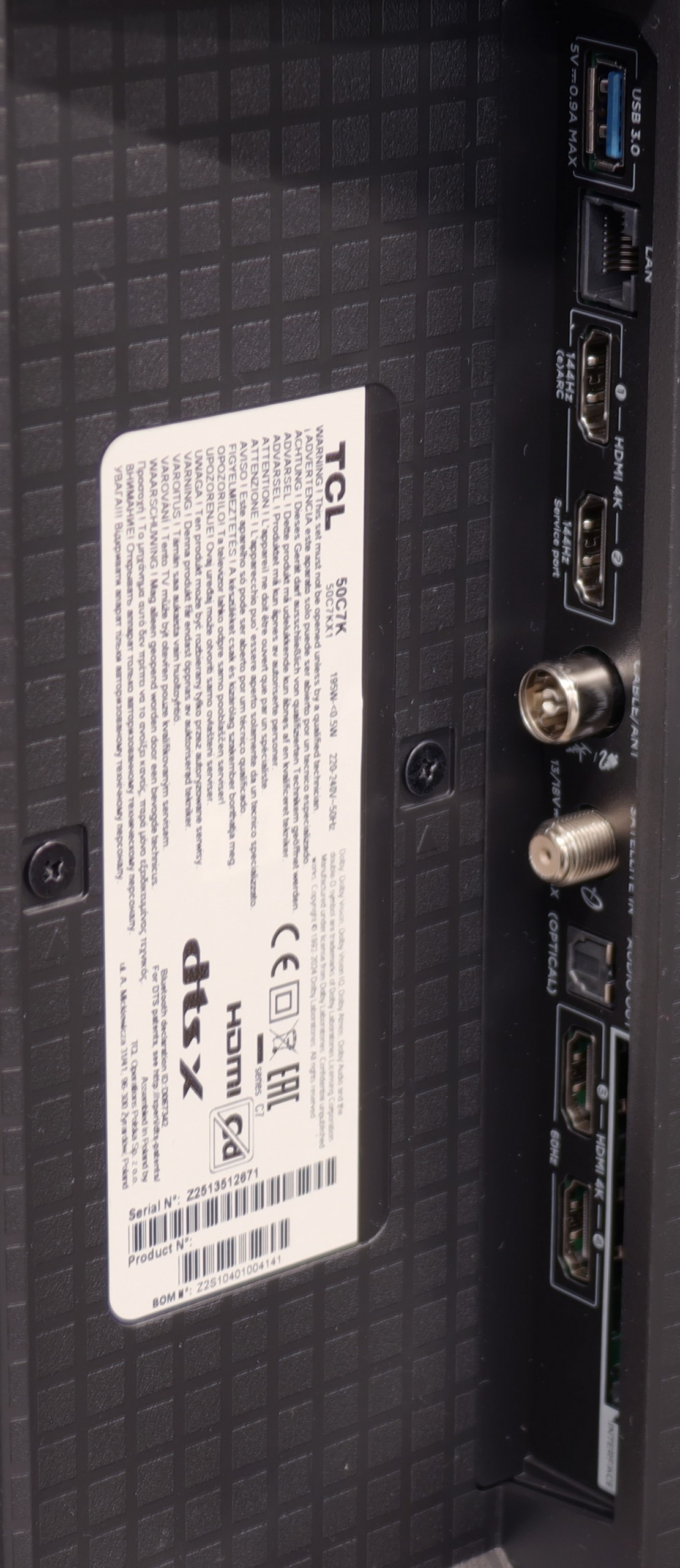
Hisense E7NQ PRO operates on the VIDAA system, which has recently made significant progress. Most popular applications can be found here, although unfortunately, some music platforms like Spotify or Tidal are missing. Nevertheless, navigating the menu is quite enjoyable, and the responsiveness is at a satisfactory level. Yes, there are occasionally minor "stutters," but this is not something that will overwhelm our daily usage experience.
On the plus side, we can appreciate the support for voice search in Polish, which makes it easier to find favourite content without the tedious process of typing letters one by one. The television also offers plenty of additional options: we can record programmes, use AirPlay and mirroring, as well as enjoy extensive wireless connectivity options (Wi-Fi and Bluetooth). Perhaps it lacks a backlit remote or Picture-in-Picture (PiP) mode, but these are rather niche features, so few will truly feel their absence. In everyday use, we simply have a solid foundation of useful tools and convenient solutions.
SmartTV: GoogleTV
The greatest strength of the TCL C7K in everyday use is undoubtedly the Google TV system. Thanks to it, we have access to an almost endless library of applications, including some more niche ones that are often unavailable on other platforms. The built-in Google Assistant understands Polish, so we can easily ask what’s on TV, what the weather is like, and even issue a few voice commands to control the television. The presence of Chromecast and AirPlay, which work smoothly and make life easier, is also a plus.
User Functions
On the downside, the classic features are somewhat lacking. Of course, we have the basics – teletext, EPG, and the ability to connect headphones – but that’s about it. There is no USB recording feature or picture-in-picture (PiP) mode, which can still be found among competitors. It’s also worth remembering that Google TV in the TCL edition can sometimes have strangely translated parts of the menu or minor errors in the interface. These are not things that interfere with daily use, but those sensitive to details may notice them.
Playing files from USB
5.2/10
9.2/10
Supported photo formats:
Maximum photo resolution:


If we are counting on comfortable viewing of films with subtitles directly from a pendrive, we may unfortunately be disappointed. Just like with the previously tested A7NQ, we encounter a rather peculiar situation here: the television does not display subtitles, even if we correctly place them on the device and try various formats. Paradoxically, we find options to change the colour and appearance of the font, but as they say – what's the point if we still won't see anything?
In the case of other files, such as photos or music, the E7NQ PRO manages without major problems, playing the most popular formats without a hitch. Unfortunately, for those who would like to use the television as a multimedia player, the lack of functioning subtitles is quite a nuisance.
The built-in file player in the TCL C7K performs really very well. It supports most of the most popular audio and video formats, so if we want to quickly plug something in from a USB drive and play it – there should be no problem. Of course, as is usually the case, we can find some minor shortcomings – not every exotic codec will work (Apple's HEIC), not all subtitles will be perfectly synchronised (txt.). However, the biggest advantage of this television comes to the rescue, namely Google TV. Thanks to access to the Google Play store, we can easily install an alternative player, e.g. VLC, and then no files will be a concern for us.
Apps
7.7/10
9.6/10














































Sound
7/10
7/10
- Subjective sound quality:7/107/10
- Dolby Digital Plus 7.1:
- Dolby True HD 7.1:
- Dolby Atmos in Dolby Digital Plus (JOC):
- Dolby Atmos in Dolby True HD:
- DTS:X in DTS-HD MA:
- DTS-HD Master Audio:
When it comes to the built-in speakers, Hisense E7NQ PRO pleasantly surprised us. Of course, it is not on the level of a proper soundbar or home cinema system, but in everyday conditions, it performs quite well. During our tests, the dialogues remained clear, and the sound was sufficiently clean and spacious, so there was no immediate need to invest in additional audio equipment.
It also deserves credit for supporting multiple audio formats – from Dolby Atmos to the less common DTS:X. As a result, if we come across the right source materials, we can expect a more immersive, spatial experience. Although in terms of sound, it is still primarily at the level of a decent basic setup, Hisense E7NQ PRO should satisfy most users who simply want to turn on the television and hear clear, unblemished sound.
To be honest, we didn’t expect much from the sound of the 50-inch version of the C7K model. Typically, in such sizes, it’s hard to get anything more than thin, flat sound. But here – a pleasant surprise. The audio proved to be really enjoyable, with good clarity and even a slightly discernible bass. This is probably related to TCL's new collaboration with the Bang & Olufsen brand, which is a novelty for 2025. Whether the C7K actually uses the original transducers from the Danish premium brand – we cannot confirm. But the end result still deserves a thumbs up. For a television without a soundbar – it sounds quite pleasant.


